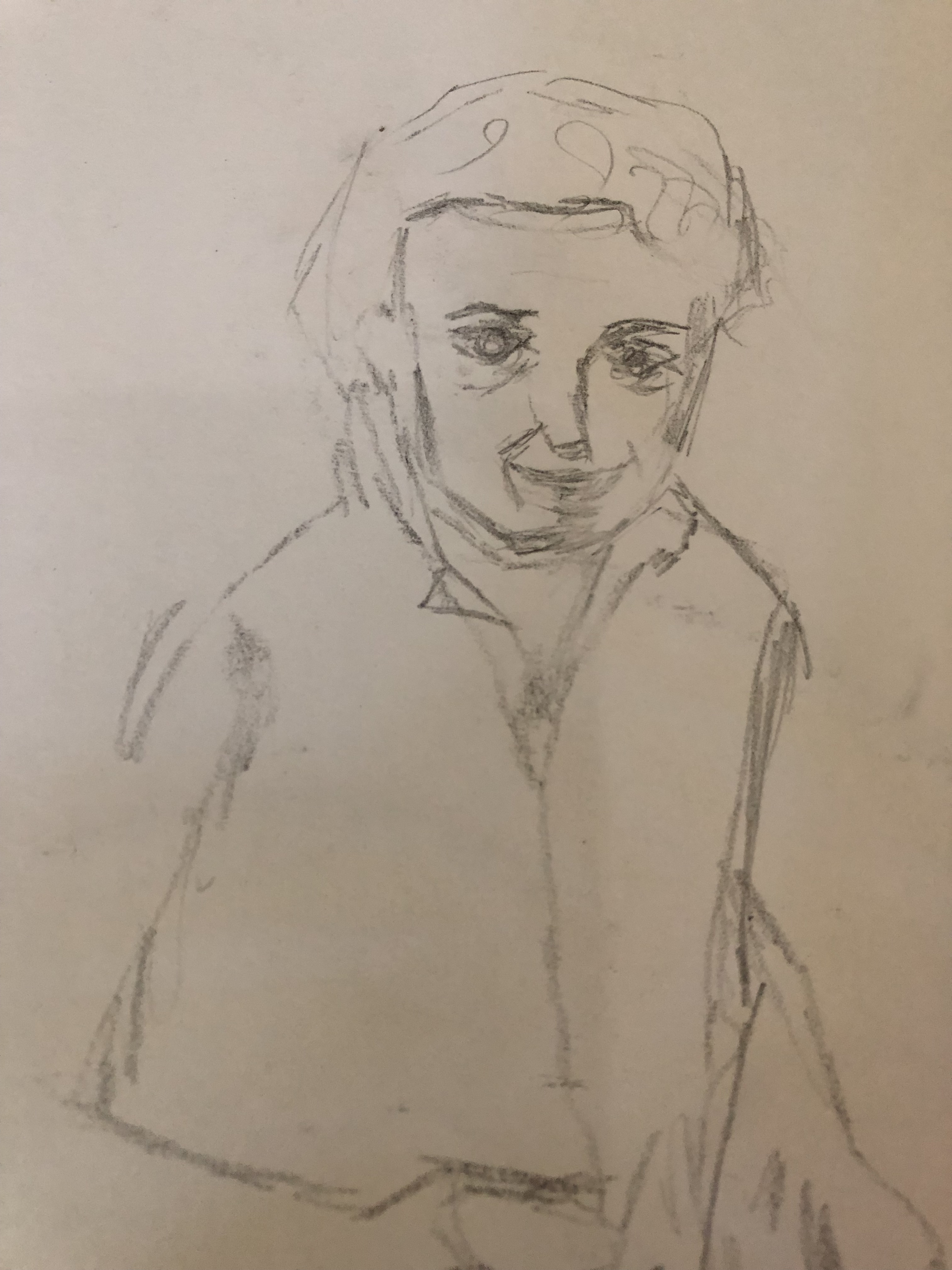Exercise 1 Facial features
“The face, for all of its animation, is a thin layer of soft tissue on top of a surface of inflexible bone. It is most technically accurate when it is depicted in terms of form.” Daniel Maidman.
I think the face shows the unique in each human and also relates to the mind, not just a body which is physical and or sensual representations. I understand the idea is to find all the features of the head and the relationship of these features.
I used my husband as my model – I realise the struggle I would have with objectivity and drawing what I see, because his face is so familiar to me.
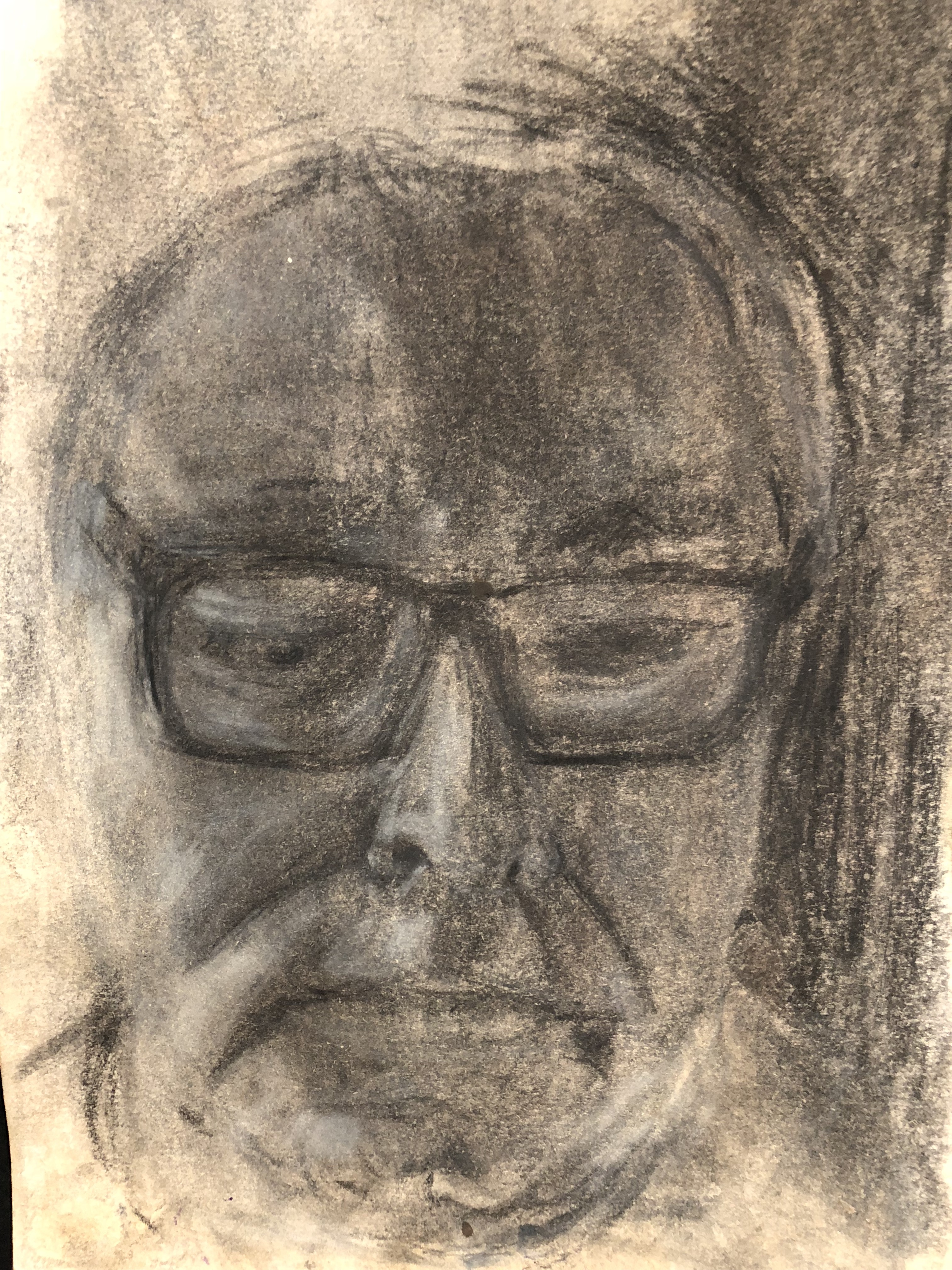
Tienie reading – small sketch – I think I found the likeness and facial features. I later dipped the paper in diluted ink.
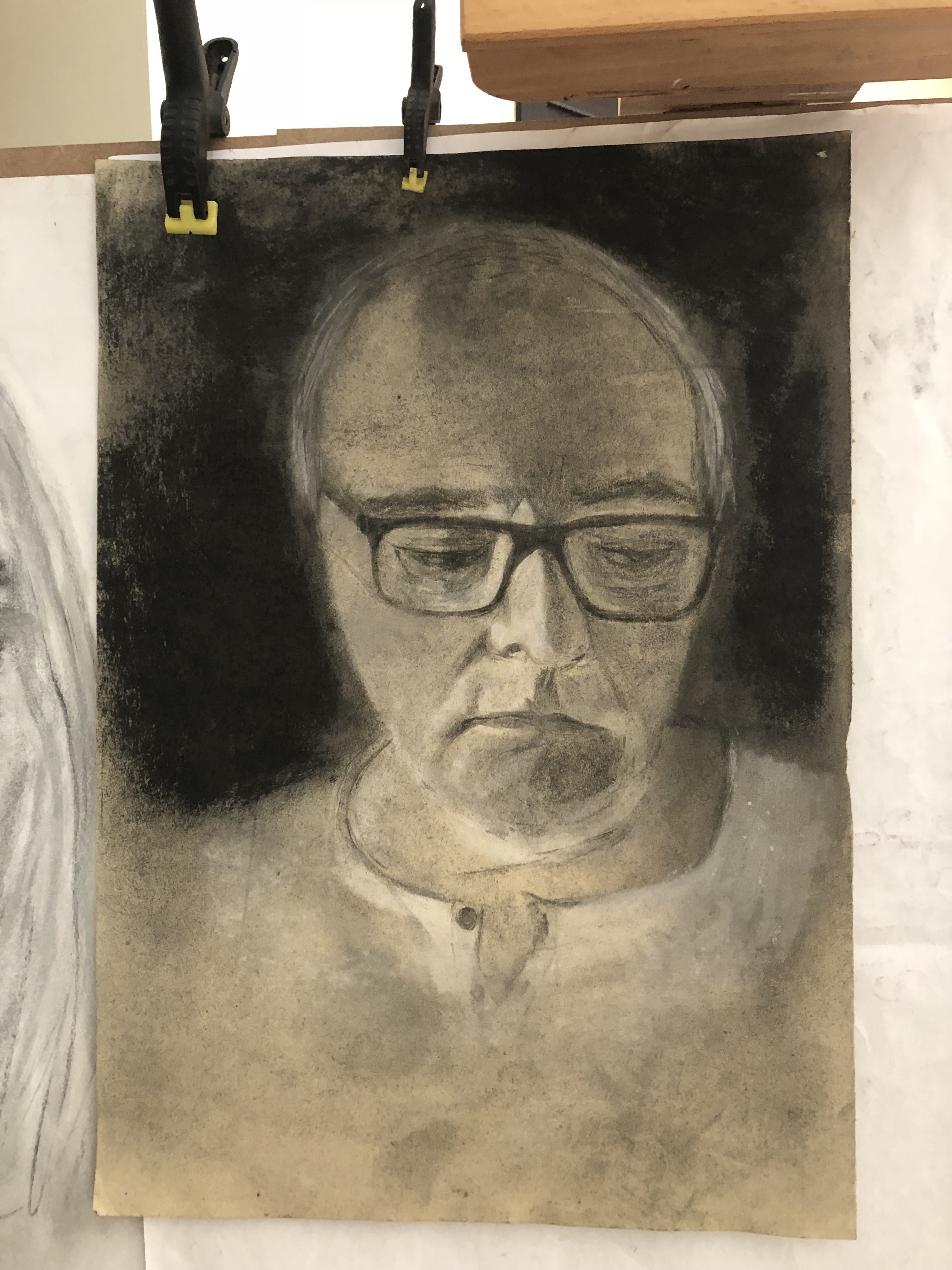
Longer study of Tienie, reading. I used charcoal powder to help me find the shape of his head.
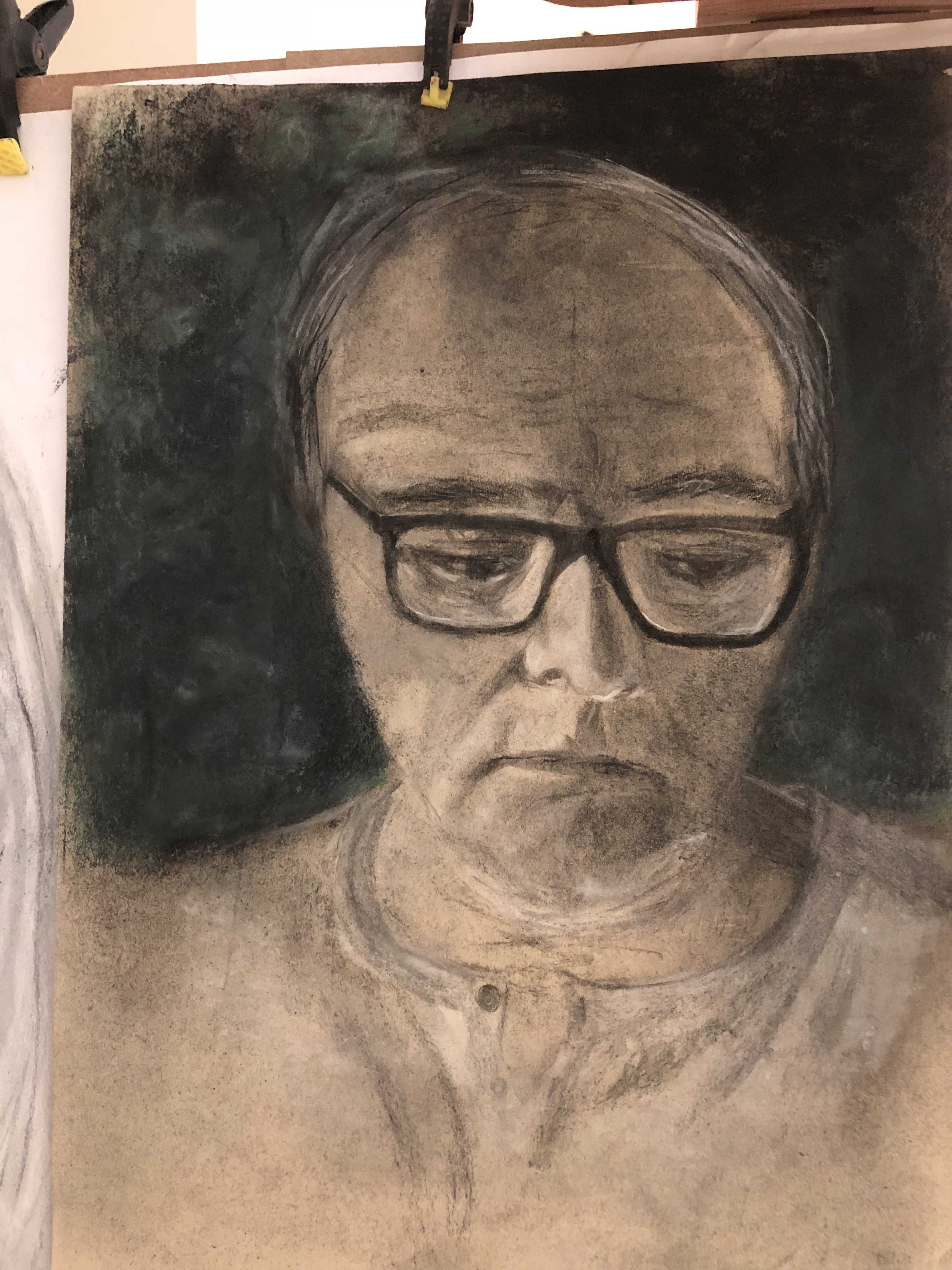
I added some background and more lines to define form of his clothes and facial expression – he is reading. Could it be that is eyes are too big?
I experimented further with the drawing and made an ink and jik short study on brown paper. I used normal black fountain pen ink and drew on it with pen, earbud, toothpick.
Exercise 2 Your own head
I started with short quick drawings from photographs on newsprint and tried to get different angles.
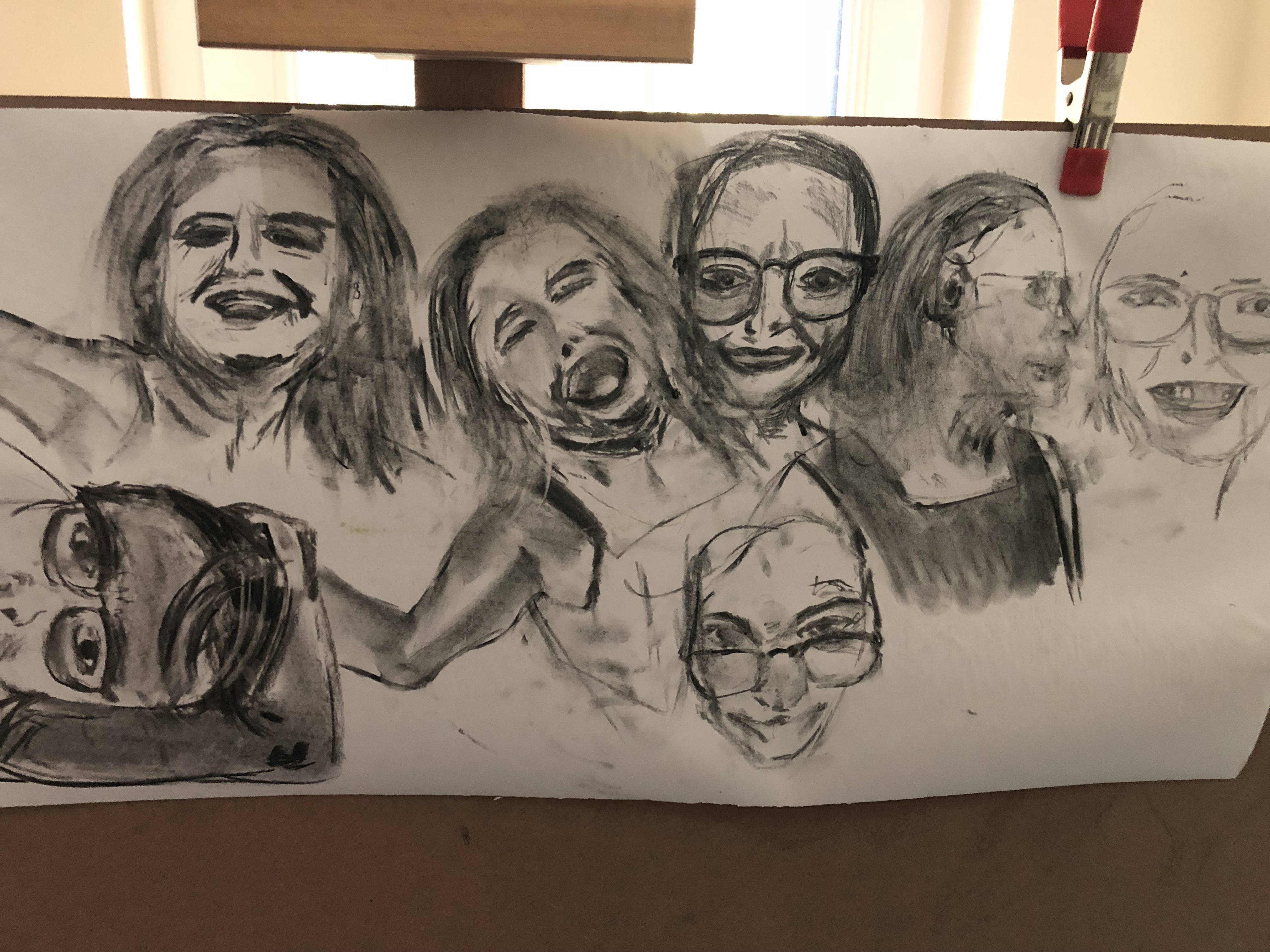
I am more happy finding tone and los0e shapes of features of my face – I did not concentrate so much about finding likeness whilst doing this drawing.
I placed a mirror on my easel and sat in front of it. I battled mostly with my eyes. I decided to push on and add pastels. This developed in using a brush and water to find the layers of form in my face – too round and maybe the chin needs more work.
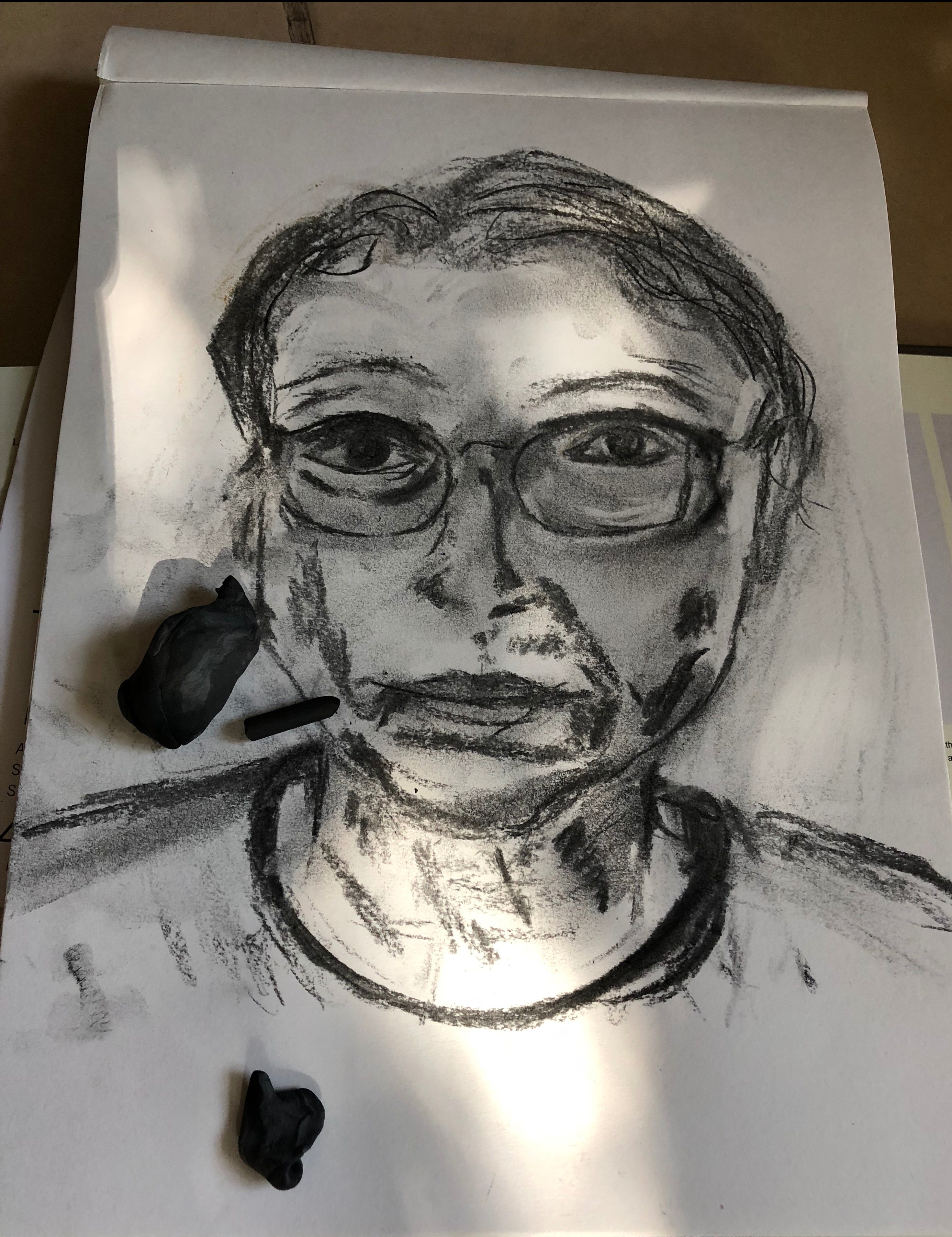
Looking at the photo of this drawing – I find more issues – mouth, eyes, roundness of left cheek….!! Not going too well here! I see the blocking in was not done with enough focus on the structure of my face. I started to quickly with colour and detail, form was not found correctly – I had to stand back at this stage and work more on modeling the form with charcoal to find values of the planes of the cheekbones and the eyes. Almost taking time to get ‘familiar with’ what I thought I knew.

I need more theoretical knowledge of the physical head – I found Andrew Loomis, Drawing the Head and Hands on the internet, and decided it would be useful to find basic structure and the planes on my face and work from there on the drawing. According to Loomis the cranium is spherical, but with flattened sides. So, chopping off a slice from both sides gets us a very close representation of the cranial mass. When drawing the head, one should start with a ball and draw an oval to indicate the flat side plane.

Looking at the Rodin sculpture of the head, I now see these perfect proportions!
It is important for me to find the relations of my features – eyes, nose, mouth…and find consistent proportions in what I see in front of me in the mirror.
I also got side tracked by finding my likeness. I am not happy with how my eyes came out and think I could have use the colour more efficiently to show planes of the face.
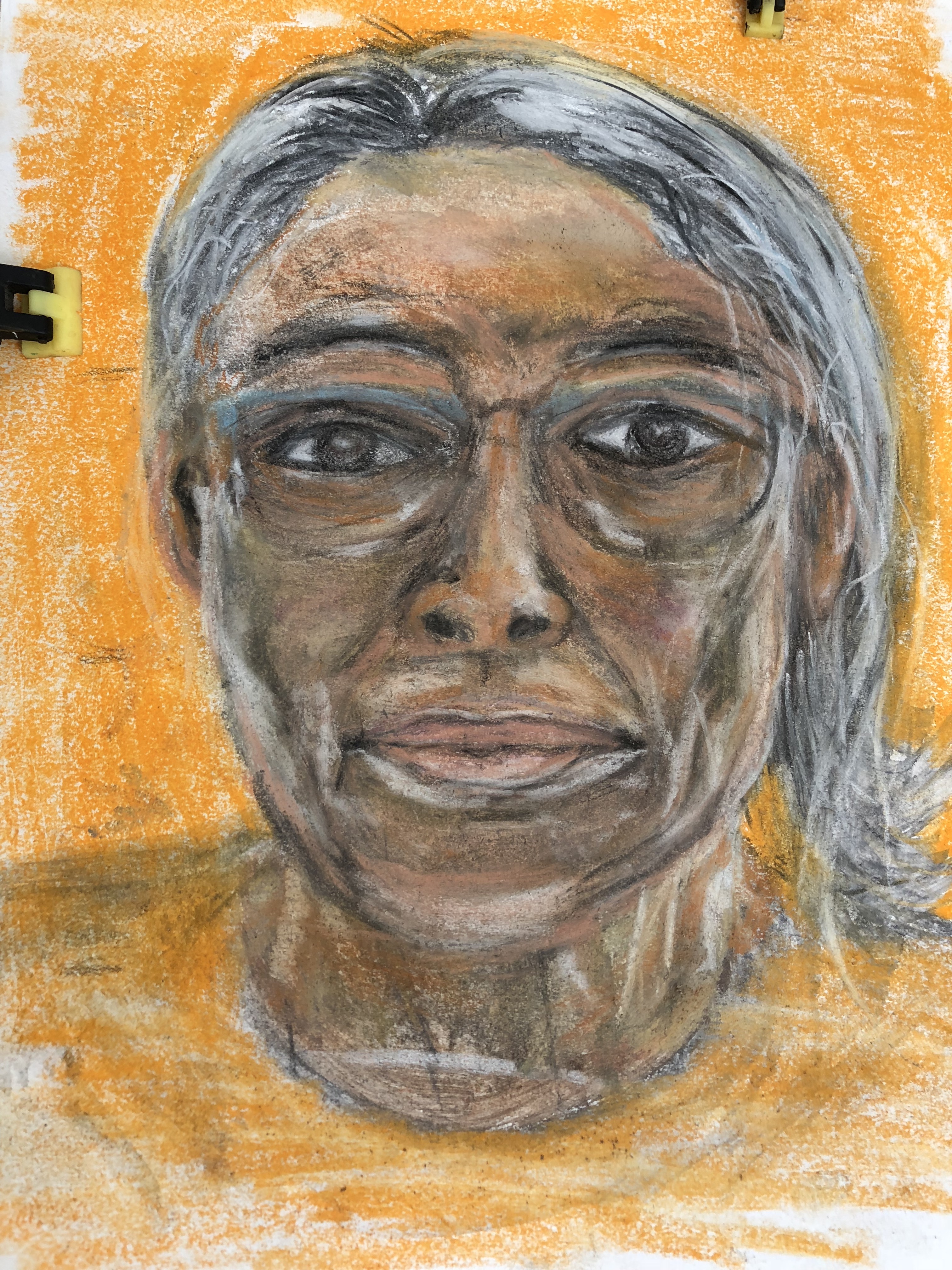 My proportions are not quite there (hairline not big enough) – according to Andrew Loomis the important part is finding the keypoint in the face – the cross where the middle of the brow and the middle of the nose meet – from here you can establish other points on the facial plane.
My proportions are not quite there (hairline not big enough) – according to Andrew Loomis the important part is finding the keypoint in the face – the cross where the middle of the brow and the middle of the nose meet – from here you can establish other points on the facial plane.

I decided to do a side view portrait as well. I worked on a paper on which I had previously experimented with ink and bleach – it formed a head looking sideways. I made the drawing with white India ink and Linseed Stand oil. This is a quick drawing and I think it does not need to more lines.
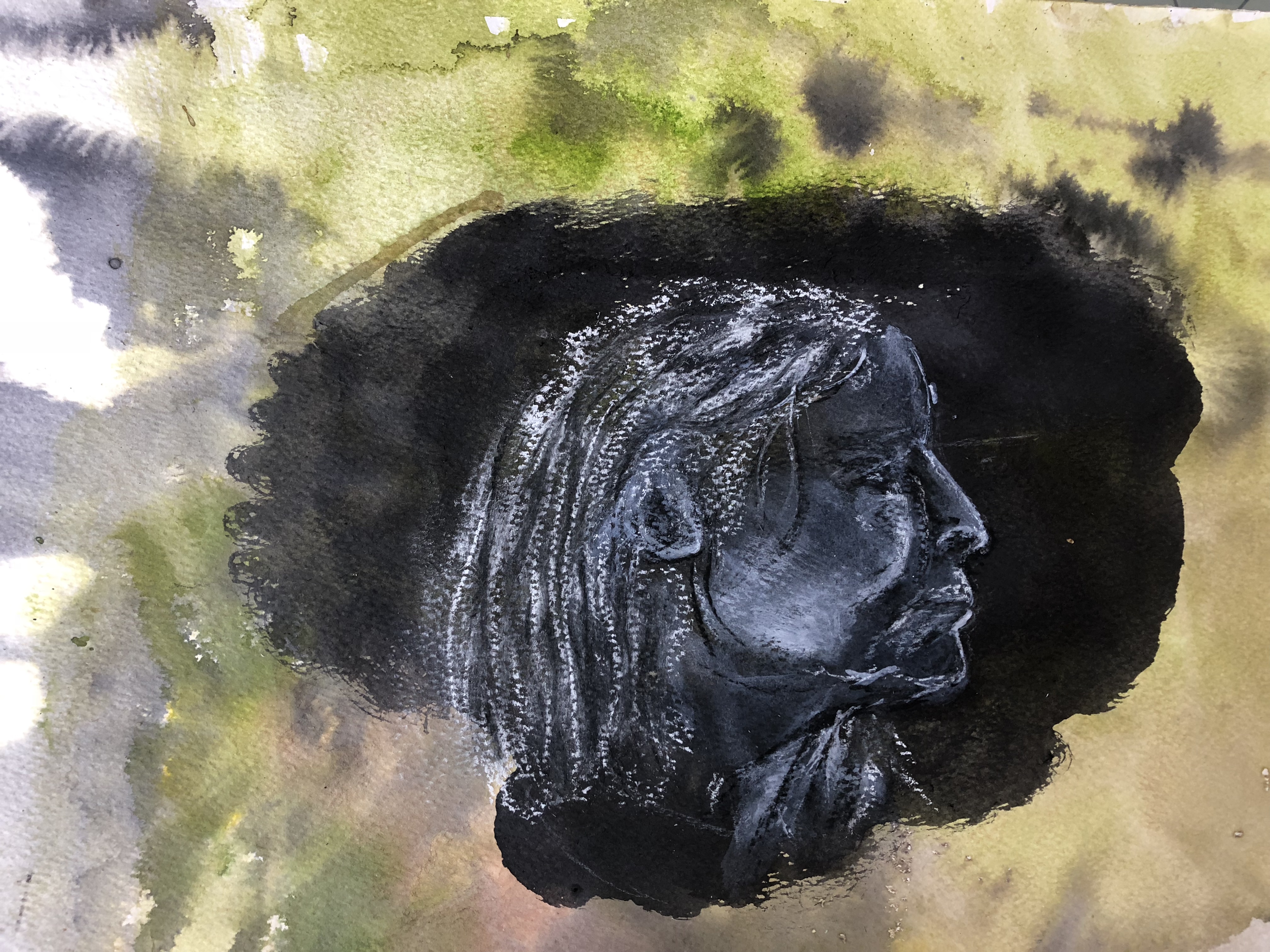
I used some white chalk on the hair, blended it with linseed oil and then made some india ink lines.
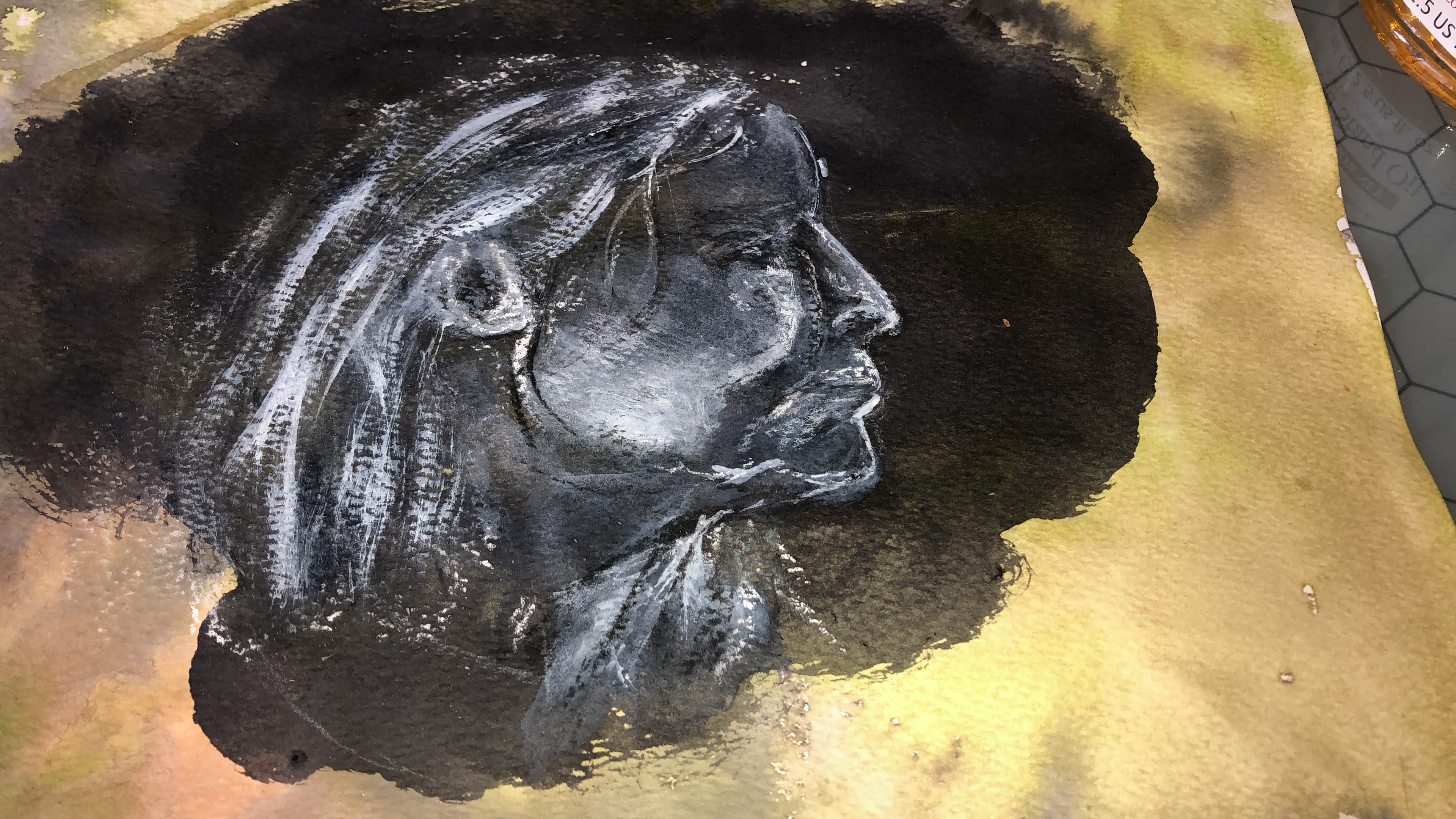
Sketchbook drawings and photo collage – paying with an idea.


After these drawings were done, I read a book by Rob Zeller, The Figurative Artist’s Handbook. He emphasise to first block in the head, but not the face itself. At this stage it is important to place the head correctly in space and determining where and how the spine flows into the skull. It is again finding gesture of the head, then a division of light and shadow, with a strong terminator line to get the general from of the head take shape. He shows how he maps the front and side planes of the head – in my study I could do it, as I was on identical eye level. He looks for 5 bony landmarks:
- the top of the forehead
- the glabella bony mass at the center of the brow ridge between the eyes)
- the base of the nose,
- the base of the mouth ( under the bottom lip)
- mental protuberance (chin, small notch on the front of the chin)
It is clear that I should first aim for proportion, block in and form, before exploring with colour.
Exercise 3 Portrait from memory or the imagination
A challenge to a seeing encounter – momentarily, or not at all, like in a dream/ imagination.

